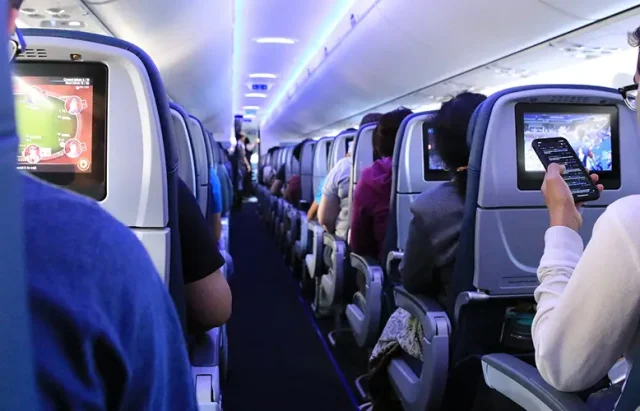
Many of us struggle with a wave of fear as soon as the fasten seatbelt sign comes on. From the fear of turbulence to anxiety about takeoff and landing, many anxieties exist when flying. But how can you rid yourself of flight anxiety and enjoy your journey this summer?
James from Travel Lingual delves into five tips that work to ease flight anxiety.
Check A Turbulence Forecast
James says, ‘While it’s common for travelers to check the weather forecast for their departure and destination cities, did you know you can also anticipate turbulence during your flight? Several turbulence forecasters can analyze the wind and weather patterns along your flight path and provide a detailed chart of potential turbulence zones.’
This proactive approach can alleviate your anxiety by offering insights into when to expect turbulence. However, these forecasts are subject to change, particularly on longer flights.
Don’t Drink Caffeine
Avoid caffeine before your flight, as it’s known to elevate your heart rate and potentially exacerbate your anxiety. While that nearby coffee stand might be tempting, opting out of caffeine can help keep your body at ease.
James says, ‘Remember, caffeine is a stimulant that may intensify feelings of anxiety during your flight. Instead, choose a soothing alternative like herbal tea, which can contribute to a calmer state of mind.’ By nurturing your body’s relaxation, you’ll also find it easier to ease your mind.
Learn What All Of Those Sounds Mean
Every ‘ding’, ‘ping’, and ‘whoosh’ on a plane can be unsettling if its origins are unknown. However, these noises are routine and indicate the aircraft’s normal operations.
‘A lot of anxious fliers have reported feeling scared when hearing a double ‘ping’ sound during takeoff,’ James says. ‘For most aircraft, that simply means the airplane has reached 10,000 feet, and flight attendants can start their in-flight duties.’ Similarly, various bell or chime sounds serve as communication tools for the flight staff.
Mechanical sounds, such as wing adjustments for takeoff and landing, are also customary. These mechanisms may appear louder or more alarming if seated closer to specific plane areas. By familiarising yourself with these sounds and their meanings, you can alleviate your apprehensions and enjoy a smoother flying experience.
Talk To Your Flight Crew
If your fear is eating you up inside, you don’t have to reply, “Good, thanks!” when a flight attendant asks you how you’re doing. Feel free to be honest with your flight attendants about your nervousness. They are air travel experts and will give you insights to put your mind at ease.
James says, ‘If you’re not in the talking mood, plenty of flight attendants, pilots, and other aviation specialists on online forums can explain turbulence and other potentially scary flight factors. For these folks, flying isn’t scary; it’s one of their passions. Exploring why they have this perspective can help calm you.’
Learn Mindfulness Techniques
Fear is ultimately irrational and may strike you during your flight even if you’ve fully prepared yourself. James explains, ‘It’s important to know some mindfulness techniques to set yourself at ease if you have a mid-flight panic. Try combining techniques in high-stress environments outside of flying first, so you know which ones work best for you.’
Here are James’ top tips:
Deep Breathing
Psychologists, athletes, and yogis use breathing techniques to centre the body and ease the mind. Many techniques exist to get your breath from panicky back down to normal. One is the 4-7-8 breathing method, which is noted for helping with anxiety, relaxation, and sleep. Breathe through your nose for four seconds, hold for seven seconds, and breathe out through your mouth for eight. Repeat up to four times.
Visualization
Closing your eyes and painting a detailed picture in your mind can be a powerful relaxation and distraction technique. ‘When I’m nervous about traveling, the best visualization is picturing myself relaxing at the destination I’m going to,’ James advises. It helps ground me and remind me why I’m going through the stress of traveling in the first place.’





